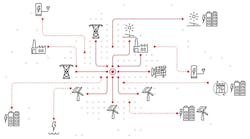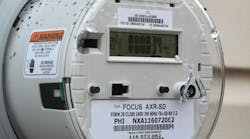Energy consulting and testing & certification company DNV KEMA Energy & Sustainability was hired by Netbeheer Nederland - the Association of Energy Network Operators in the Netherlands - to study smart grid demonstration projects around the world, with a focus on technical, policy, regulatory and social aspects. The points learned from this study will help inform network operators involved in current and future smart grid projects in the Netherlands.
Continental Differences
The study focused on the differences between continents. For instance, in the US, smart grids are mainly used to make variable energy rates possible and to reduce peaks in electricity use. In Europe, the emphasis is on energy efficiency and reducing CO2 emissions, whereas in some parts of Asia the priority is on improving the reliability of the energy network.
Main Conclusions
Smart grids can be used to counter peaks in energy consumption because they can be used with pricing incentives. However, a rates incentive alone is often insufficient to reduce demand. Consumer involvement is also necessary to achieve this. Energy displays and smart phone applications in particular increase consumers' awareness of their energy consumption. A strong argument for many people is that they enable financial savings with this. At the same time, many consumers are not yet aware of the opportunities that smart grids offer. It is important that this changes in order to gain sufficient support for this new technology. The acceptance of end users ultimately determines the success of a smart grid.
Preconditions for Energy Transition
Smart grids are an important precondition to making the energy transition possible. Dutch network operators invest approximately 1.5 billion euros annually in the replacement and expansion of their grids. The Netbeheer Nederland report 'Networks for the future' showed that between 20 and 70 billion euros extra must be invested before 2050 in order to adapt and 'smarten' the energy grids. It is imperative that these investments be practical. An earlier cost-benefit analysis showed that smart grids are profitable, due to consumer behavioural adaptation in response to variable energy rates as well as to cost savings in the construction of the energy grid.
Test Sites
Before the network operators can decide to make such sizeable investments, it is important that they first gain smaller-scale experience with the different aspects of a smart grid. To that end, the network operators started a number of test sites, where these aspects are tested for feasibility in practice. The experiences are shared among the network operators and with other stakeholders, with the aim of using this knowledge to make the right choices for the future. Now the results of the DNV KEMA study can be used for this purpose as well. Click here for the full study.
Netbeheer Nederland (the Association of Energy Network Operators in the Netherlands) is the branch organisation for all electricity and gas network operators. The network operators have two main tasks: they manage the physical grid infrastructure and they facilitate the functioning of the market.

